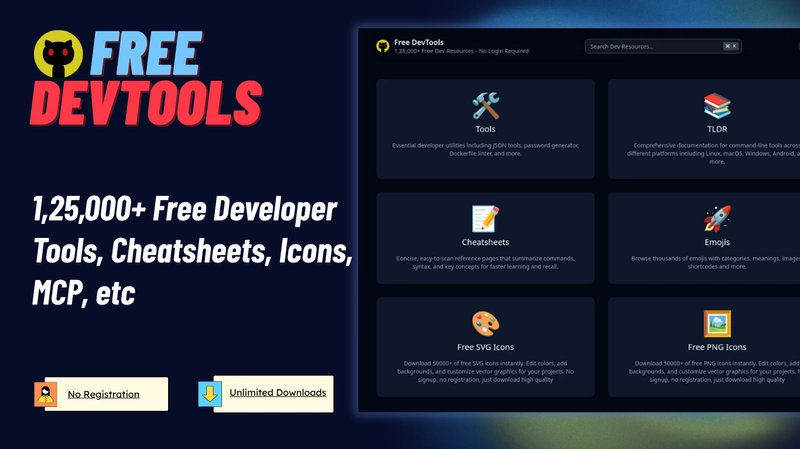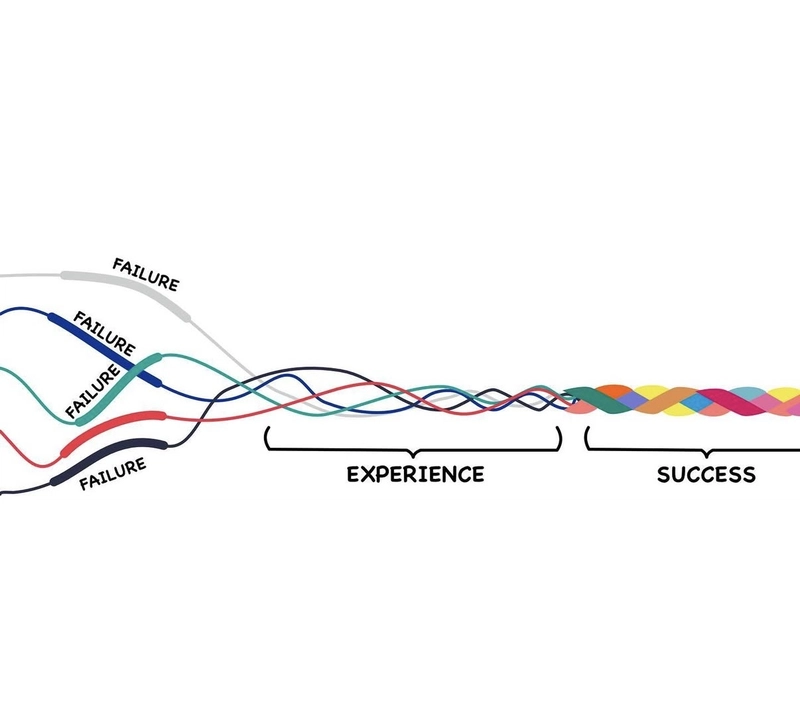Hello, I’m Maneshwar. I’m working on FreeDevTools online currently building *one place for all dev tools, cheat codes, and TLDRs* — a free, open-source hub where developers can quickly find and use tools without any hassle of searching all over the internet.
When your Astro site grows into thousands of static pages or complex Markdown pipelines, build times start becoming painful.
It’s natural to ask:
Can switching from Node.js to Bun make my
astro buildfaster?
The short answer: sometimes — but it depends on where your bottleneck is.
This post dives deep into how both runtimes handle threads, parallelism, memory, and what you can realistically expect when building Astro static sites with Bun instead of Node.
1. The context: a typical Astro build setup
Let’s start with what most production setups look like.
Your package.json scripts might currently look like this:
"scripts": {
"dev": "node --max-old-space-size=16384 ./node_modules/astro/astro.js dev",
"build": "NODE_OPTIONS='--max-old-space-size=16384' UV_THREADPOOL_SIZE=16 astro build"
}
You’re already maxing out memory (--max-old-space-size=16384) and increasing libuv threads for file I/O (UV_THREADPOOL_SIZE=16).
That’s a solid Node optimization baseline.
Now, if you replace Node with Bun, the equivalent commands are:
bunx --bun astro build
# or
bun run astro build --bun
So… will that simple switch make your builds faster? Let’s break it down properly.
2. Architectural differences: Bun vs Node
Both Bun and Node are JavaScript runtimes, but they’re architected differently.
| Feature | Node.js | Bun |
|---|---|---|
| Engine | V8 (Google Chrome) | JavaScriptCore (WebKit) |
| Language | C++ | Zig |
| Concurrency model | Single-threaded JS + libuv threadpool | Single-threaded JS + native multithreading for subsystems |
| Default threadpool | 4 threads (configurable via UV_THREADPOOL_SIZE) |
Dynamically scaled native threads |
| Bundler | External (Vite, Rollup, esbuild) | Built-in, native Zig-based bundler |
| Package manager | npm/pnpm/yarn | Integrated (native, extremely fast) |
| Startup time | Slower (V8 warmup) | Much faster (JSC cold start is faster) |
| TypeScript | Needs tsc/esbuild | Built-in transpiler |
| Compatibility | 100% | ~95% (Node APIs mostly implemented) |
In simple terms:
- Node delegates a lot of work to JavaScript-based tools (e.g., Vite, Rollup, esbuild via Node modules).
- Bun rewrites large parts of this stack in Zig, running natively — less overhead, better parallelism, faster I/O.
3. Understanding parallelism and CPU usage
Node.js internals
Node runs on V8 (Google’s JS engine).
All JS code executes on a single thread, but Node offloads certain work — filesystem I/O, crypto, DNS — to a threadpool managed by libuv.
By default:
UV_THREADPOOL_SIZE = 4
That means Node can run 4 parallel I/O operations.
You can increase this up to your CPU core count:
export UV_THREADPOOL_SIZE=16
However, this only speeds up I/O-heavy parts (e.g., image processing, reading/writing many files).
It doesn’t parallelize your JS logic, since the JS event loop is single-threaded.
Bun internals
Bun uses JavaScriptCore (JSC), the JS engine from Safari, and builds its own runtime subsystems in Zig.
Many parts of Bun (like bun install, bun build, file operations, and TypeScript transpilation) are implemented natively — not in JS — and they spawn native worker threads automatically.
So while Bun still executes JS single-threaded, its native backend can run multiple tasks in parallel across all CPU cores.
For static site builds, this can help in:
- Reading thousands of small Markdown files
- Generating pages concurrently during build
- Transpiling or bundling components
- Compressing assets
4. What actually happens during an astro build
An Astro build roughly does the following:
-
Initialize Vite
- Resolve dependencies, load config, setup plugins.
-
Compile pages
- Parse Markdown, MDX, or content collections.
-
Render HTML
- Each page is rendered by server-side rendering in Node (or Bun).
-
Bundle assets
- CSS, JS, images — Vite/Rollup handle these.
-
Write to
dist/- Generate static files on disk.
Out of these, step 3 (rendering HTML) is CPU-bound JS work, and step 4 (bundling) is I/O + compute heavy.
Bun can help in step 4; Node + libuv can already do okay in step 5 if tuned.
5. Bun’s possible performance advantages
✅ Faster startup
Bun’s process startup is faster than Node’s — useful for scripts that run short-lived commands like astro build.
✅ Native multithreaded I/O
Bun automatically parallelizes file reads/writes and zlib compression, while Node requires manual tuning.
✅ Built-in TypeScript transpilation
No ts-node or esbuild invocation overhead.
✅ Integrated package manager
bun install is dramatically faster than npm/pnpm.
If your CI installs dependencies every run, this step alone can cut 30–70% off total build time.
✅ Optimized memory usage
Because Bun handles many tasks natively in Zig, it avoids the JS↔C++ bridge overhead Node suffers during heavy I/O.
6. What Bun won’t help with
- Astro’s server-side rendering logic is still single-threaded JS — no runtime can magically parallelize that.
- Heavy content pipelines (Markdown parsing, plugin hooks) are CPU-bound in JS.
-
Plugins written for Node internals may break — e.g., anything that assumes
process.bindinginternals. -
Native Node modules (
sharp,sqlite3,better-sqlite3) might not work yet under Bun without shims.
In other words: Bun helps when you’re I/O bound, not when you’re compute bound.
7. Astro + Bun compatibility
Astro officially documents a recipe for running with Bun — but they also note that it’s experimental.
Common issues developers have reported:
-
astro buildfreezing mid-run under Bun - Vite plugins not detecting Bun correctly
- Minor path/FS incompatibilities
- Integration issues with image tools or third-party packages
Astro’s internal bundler (Vite → Rollup → esbuild) still expects Node-like behavior. Bun tries to emulate this, but differences in file watchers, path resolution, or process APIs sometimes break assumptions.
8. How to actually benchmark (properly)
You can’t rely on “feels faster” — measure it.
Step 1: Node baseline
rm -rf .astro dist .cache node_modules
npm ci
/usr/bin/time -v bash -c "UV_THREADPOOL_SIZE=16 NODE_OPTIONS='--max-old-space-size=16384' astro build" 2>&1 | tee node-build.log
Step 2: Bun run
rm -rf .astro dist .cache node_modules
bun install
/usr/bin/time -v bash -c "bunx --bun astro build" 2>&1 | tee bun-build.log
Step 3: Compare
Focus on:
- Elapsed (wall) time
- Max RSS (memory)
- CPU utilization (%usr in
pidstatorhtop) - Stability — did it complete? was output identical?
Run 3–5 times to average out disk caching effects.
9. What your results will likely show
| Case | Expected Result |
|---|---|
| Build dominated by Markdown/SSR (CPU-bound JS) | Little to no difference |
| Build dominated by bundling or FS I/O | Bun may be 15–30% faster |
| CI dominated by installs | Bun much faster (bun install wins big) |
| Using heavy Node-only plugins | Might break or freeze |
| Large repo with 10k+ small files | Bun shows stronger gains due to native FS parallelism |
10. Node tuning before switching
If Bun doesn’t work yet for your stack, you can still squeeze more out of Node.
Upgrade Node
Use Node 22+ — it includes many performance and GC improvements.
Tune the threadpool
export UV_THREADPOOL_SIZE=$(nproc)
Set to your logical CPU count (e.g., 8 or 16).
Going beyond this rarely helps and may even slow down builds.
Cache builds
- Persist
.astro/,.cache/, andnode_modulesin CI. - Avoid re-rendering unchanged content when possible.
Profile builds
Astro supports verbose logs:
astro build --verbose
You can also use --trace-warnings and --trace-gc for memory profiling.
11. Migrating safely to Bun
If you decide to test Bun, do it in a controlled way.
- Branch off
bun install
bunx --bun astro build
- Fix any dependency errors.
- Compare build outputs with Node.
- Add a manual Bun build job in GitHub Actions:
name: Bun Build
on: workflow_dispatch
jobs:
build:
runs-on: ubuntu-latest
steps:
- uses: actions/checkout@v4
- name: Install Bun
uses: oven-sh/setup-bun@v1
- run: bun install
- run: bunx --bun astro build
- Analyze timing differences.
- If stable and faster, roll out gradually.
Keep Node builds as fallback until Bun passes consistently.
12. Summary — when to use what
| Situation | Best Choice | Reason |
|---|---|---|
| Build is CPU-bound (SSR, Markdown) | Node | JS execution dominates |
| Build is I/O-heavy (many small files) | Bun | Native parallel FS |
| CI time dominated by installs | Bun | Faster bun install
|
| You need rock-solid stability | Node | Mature ecosystem |
| You want to experiment & optimize | Bun | Promising gains |
13. Final Thoughts
Bun is not a drop-in silver bullet for Astro builds — yet.
But it’s evolving rapidly and already outperforms Node in many file-intensive or multi-threaded tasks.
For large static sites:
- You’ll see big wins in dependency installs and bundling.
- Moderate gains if your build is I/O heavy.
- No difference if your bottleneck is in Astro’s JS SSR logic.
- Potential instability if using Node-native modules or heavy Astro integrations.
If you care about squeezing every bit of performance, run both:
- Use Node for stable production builds.
- Add Bun as an experimental build runner in CI to benchmark on real data.
Data beats guesses — and once Bun matures a bit more, you’ll already be ready to switch confidently.
I’ve been building for FreeDevTools.
A collection of UI/UX-focused tools crafted to simplify workflows, save time, and reduce friction in searching tools/materials.
Any feedback or contributors are welcome!
It’s online, open-source, and ready for anyone to use.
👉 Check it out: FreeDevTools
⭐ Star it on GitHub: freedevtools




